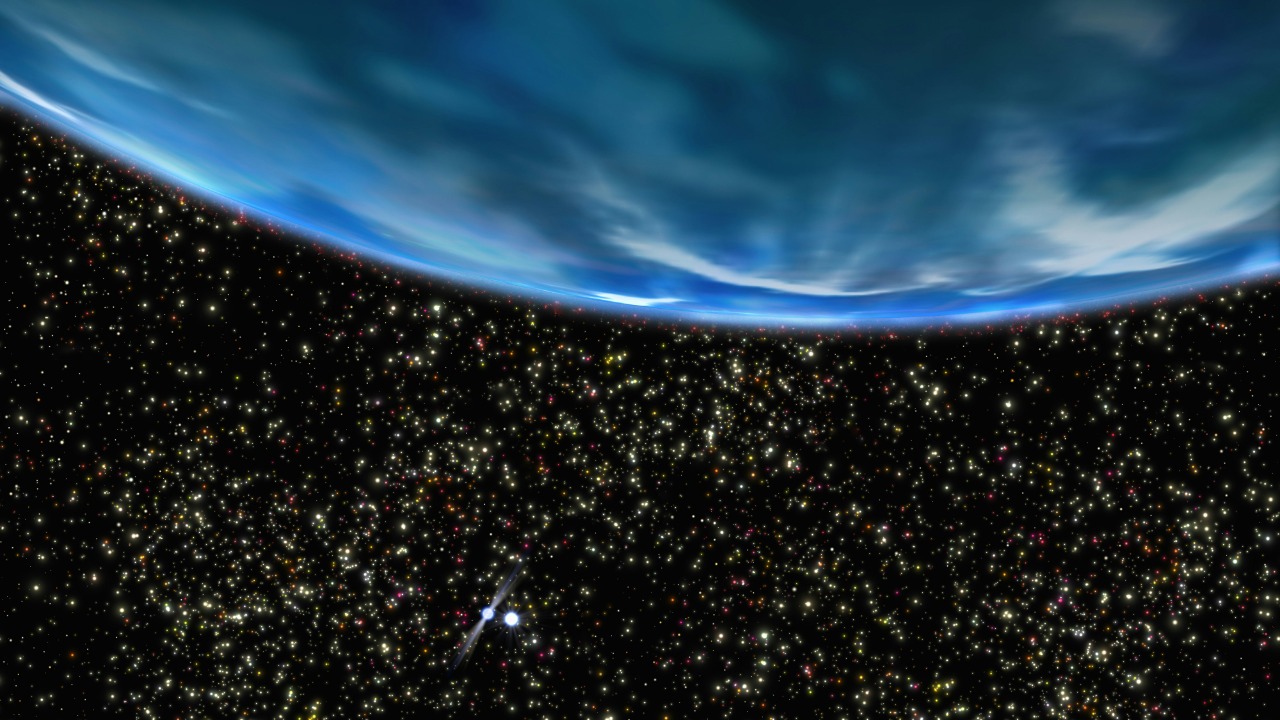
In a groundbreaking discovery, scientists have detected the building blocks of life in ice outside the Milky Way for the first time. This significant observation was made in the Large Magellanic Cloud, a dwarf galaxy approximately 160,000 light-years away. The findings reveal the presence of complex organic molecules, essential for life, embedded in icy environments beyond our galaxy, challenging previous assumptions about where life’s precursors can form. This discovery in the ST6 region of the Large Magellanic Cloud underscores the resilience of these molecules in harsh interstellar conditions, opening new avenues for understanding cosmic chemistry.
The Breakthrough Detection
Using the James Webb Space Telescope (JWST), scientists observed the building blocks of life in ice within the Large Magellanic Cloud, marking the first such detection outside the Milky Way. The specific location of this discovery was in the ST6 region, where spectral analysis confirmed the presence of organic compounds in icy grains. This milestone in extragalactic astrobiology, reported in October 2025, signifies a significant leap in our understanding of life’s potential beyond our galaxy.
Understanding the Building Blocks
The JWST detected key organic molecules, such as carbon-based compounds essential for life, frozen in interstellar ice. These life’s essentials mirror those found on Earth, playing a crucial role in forming amino acids or nucleotides, the building blocks of proteins and DNA, respectively. The chemical stability of these molecules in the cold, dense regions of the Large Magellanic Cloud further highlights the resilience and adaptability of life’s precursors in diverse cosmic environments.
The Large Magellanic Cloud Context
The Large Magellanic Cloud, where this groundbreaking detection occurred, is a dwarf galaxy located 160,000 light-years from Earth. The ST6 region, known for its star-forming activity and interstellar medium, provided the ideal conditions for the frozen detection of life’s building blocks. The environmental conditions in this galaxy bear similarities to those in the Milky Way, particularly in terms of ice composition, enabling the first extragalactic observation of these essential molecules.
JWST’s Role in the Discovery
The JWST’s infrared capabilities played a pivotal role in this discovery. Its sensitivity to mid-infrared wavelengths allowed the detection of faint signals from icy organics in distant galaxies. This discovery was the result of a collaborative effort involving international astronomers who meticulously analyzed data from the ST6 observation, underscoring the importance of global scientific cooperation in advancing our understanding of the universe.
Implications for Cosmic Origins of Life
This detection suggests that the building blocks of life could be widespread across galaxies, lending support to panspermia theories. These frozen ingredients could potentially be delivered to planets via comets or dust, seeding life in diverse cosmic locales. This discovery raises broader questions about the universality of life, linking to the first-time nature of the October 2025 discovery.
Comparing to Milky Way Observations
This extragalactic find contrasts with prior detections of similar organics in Milky Way clouds, highlighting the novelty of venturing beyond our galaxy. JWST data from the Large Magellanic Cloud shows comparable ice chemistry to local regions like Orion, emphasizing the technological leap enabling the detection of frozen building blocks outside the Milky Way.
Future Directions in Research
Upcoming JWST observations will target other dwarf galaxies in the search for similar life’s ingredients in ice. Integrating data with ground-based telescopes could provide further insights into molecular evolution in the ST6 region. This 2025 breakthrough could also inform future missions like the Europa Clipper by providing analogs for icy world chemistry, further expanding our understanding of life’s potential in the cosmos.
More from MorningOverview